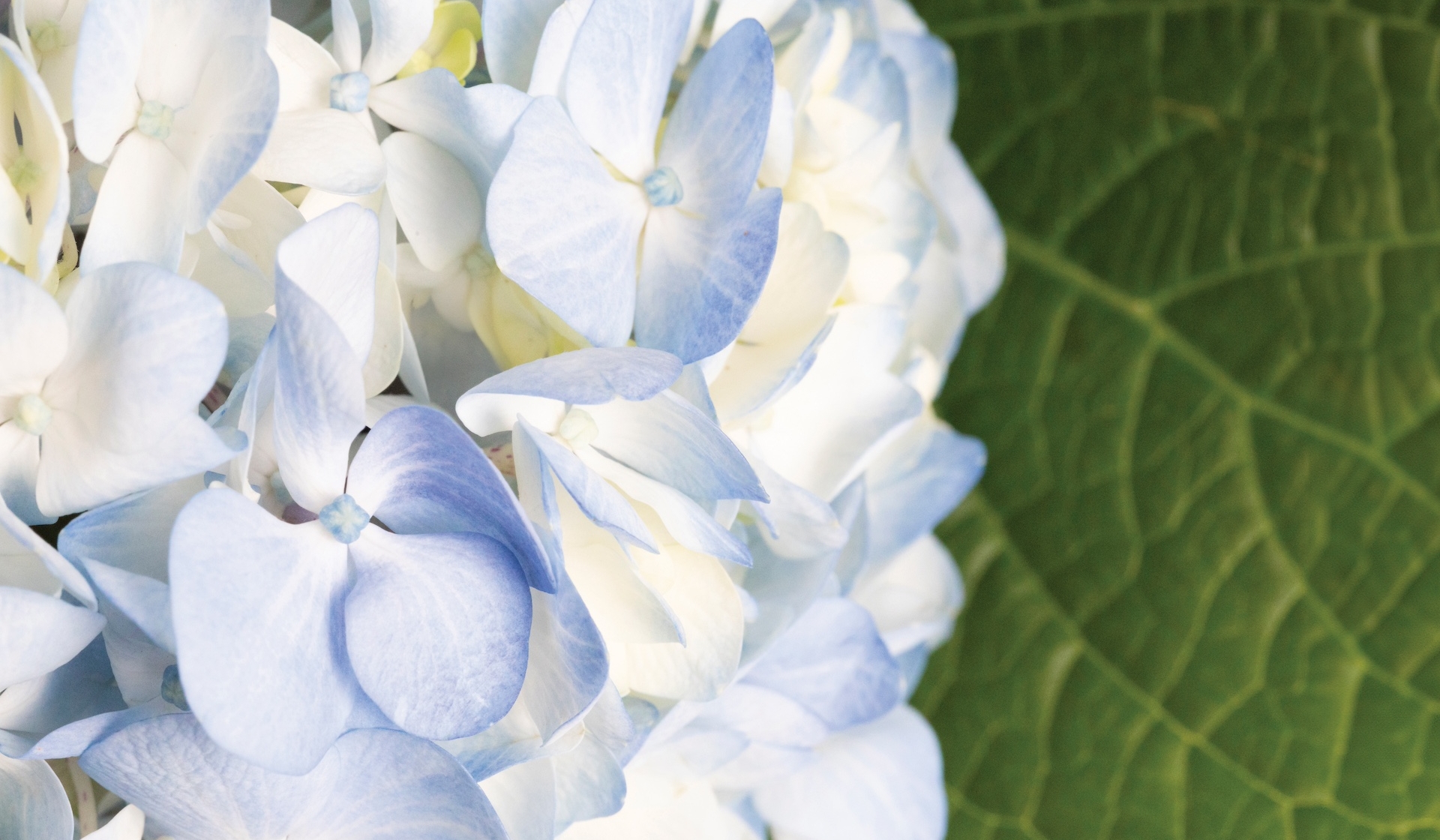Colors in Bloom
A kaleidoscope of wonders, hydrangeas offer a fascinating world of horticultural science.
To walk among hydrangeas is to walk in the midst of a bouquet of biological and biochemical fascination. As one of today’s most popular ornamental flowers, with its opulent, globe-like blooms, the hydrangea is steeped in folklore, tradition, and, surprisingly, science–as the flowerheads possess a unique ability to change color, resulting in a kaleidoscope that ranges from pink to blue to lavender and violet.
HISTORY OF HYDRANGEA
The name “hydrangea” stems from the Ancient Greek words “hydro” (meaning water) and “angeion” (meaning pitcher), as it was thought that the petals–which are in fact sterile sepals surrounding the fertile part of the plant–resembled pitchers used for carrying water.
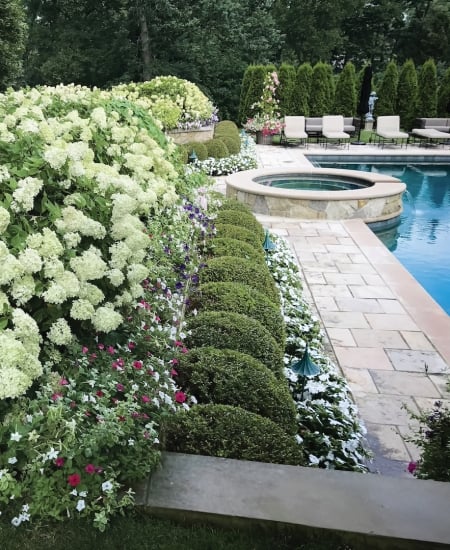
The cone-shaped panicle hydrangea offer eye-catching power to any garden. Images provided by Deborah Silver, Landscape Designer.
Throughout history, the colorful hydrangea has found its place among intriguing international lore. It is said in Japanese legend that an emperor once presented a bouquet of blue hydrangeas to the family of a girl he loved–a gift of heartfelt emotion and gratitude to demonstrate how much he cared for the maiden. Today, in some Asian cultures, to gift hydrangeas still means that you consider the recipient to be as important to you as “the beat of your own heart.”
While hydrangeas have been cultivated in China and Japan for thousands of years, the flower’s presence didn’t appear in Europe until 1775 when Swedish naturalist Carl Peter Thunberg carried five plants back with him on his return trip from Asia. The plant then quickly spread across gardens throughout the Northern Hemisphere.
FLOWER POWER
Currently, there are known to be around 70 species of hydrangea, in enough colors, sizes, and cultivars to please any gardener’s palette. Blooms vary in appearance–from the traditional snowball shape, to the delicate lace-cap, or the eye-catching cone-shape. For plant type, there are shrub hydrangeas, mop-leaf hydrangeas, hydrangea trees, and even climbing hydrangeas.
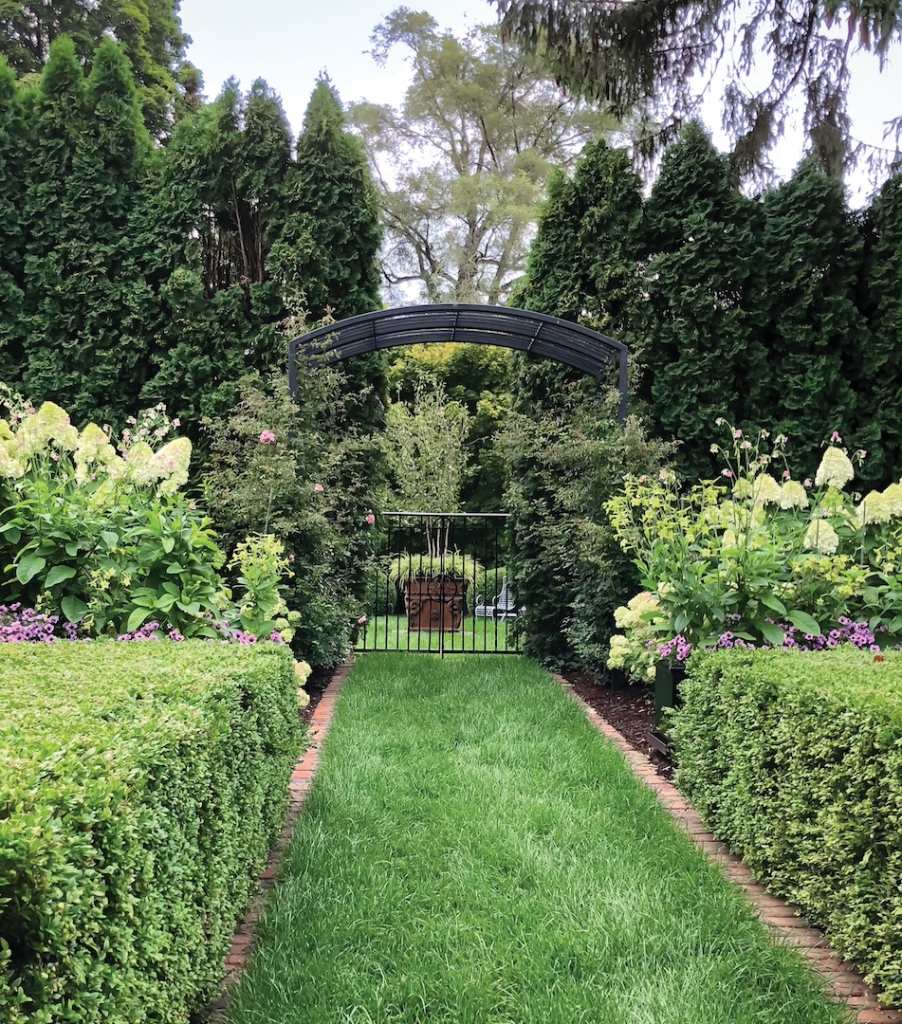 Deborah Silver, landscape designer and author of Dirt Simple, says that hydrangeas are easy to grow but can be difficult to plan in a landscape. Silver likens the hydrangea to “big, growing show-offs that don’t naturally play well with neighboring plants.” Silver notes that a single Limelight hydrangea can grow seven feet tall, and seven feet wide, and even the smaller growing cultivars have giant flowers. As such, they can become what she calls, “the elephant in the room, impossible to ignore.” Says Silver, “It takes some thought to integrate them into a garden, or a landscape. I favor planting rows of them, as opposed to a single plant. They want to be the star of the summer garden, so why not let them show off?”
Deborah Silver, landscape designer and author of Dirt Simple, says that hydrangeas are easy to grow but can be difficult to plan in a landscape. Silver likens the hydrangea to “big, growing show-offs that don’t naturally play well with neighboring plants.” Silver notes that a single Limelight hydrangea can grow seven feet tall, and seven feet wide, and even the smaller growing cultivars have giant flowers. As such, they can become what she calls, “the elephant in the room, impossible to ignore.” Says Silver, “It takes some thought to integrate them into a garden, or a landscape. I favor planting rows of them, as opposed to a single plant. They want to be the star of the summer garden, so why not let them show off?”
Whether it’s the snowiness of the Annabelle or the perfect blue of the ever-popular Endless Summer, hydrangeas add showstopping power, not only in terms of volume but also in color. Beyond some of the more recognizable hues, varieties like Pistachio, Summer Crush, Strawberry Sundae, Lime Punch and Gin and Tonic–to name just a very few–have resulted from experiments in soil science.
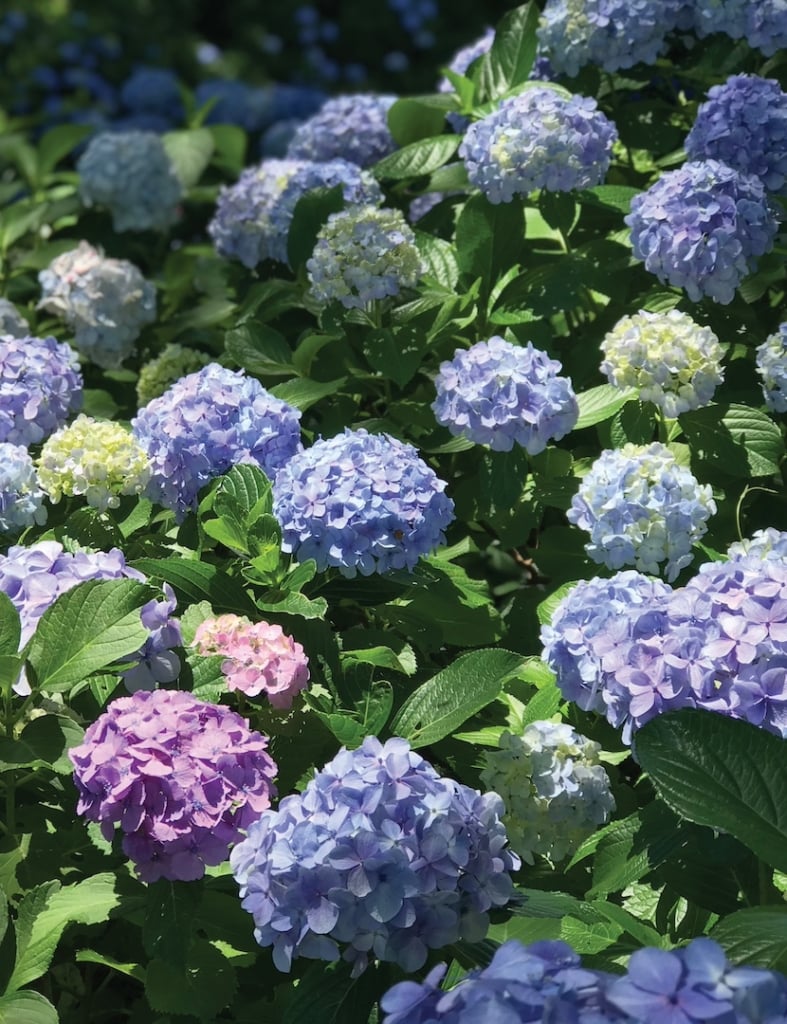
With petals being more akin to a chem lab’s litmus paper, hydrangeas change colors in a very unusual way. Eighteenth-century gardeners were the first to notice this and experimented with the plant by burying rusty nails and pouring tea around the soil.
While the common rationale is that alkaline or acidic soil are what contribute to the color of hydrangeas, Henry Schreiber, retired emeritus professor of chemistry at Virginia Military Institute, and noted lecturer on experimental color changes in the hydrangea, remarks that there is really no need for a soil test prior to experimenting with color changes.
“Red inflorescences (blooms) on the shrub typically indicate you have basic soil,” says Schreiber, “whereas blue inflorescences typically indicate acidic soil. To change the blue inflorescences to red, sprinkle lime around the plant to change the pH of the soil to basic. On the other hand, to change red to blue, sprinkle aluminum sulfate (commercially available at most garden stores) around the shrub.” One caution, says Schreiber: “Be patient! It may take one or two growing seasons for the change to occur.”
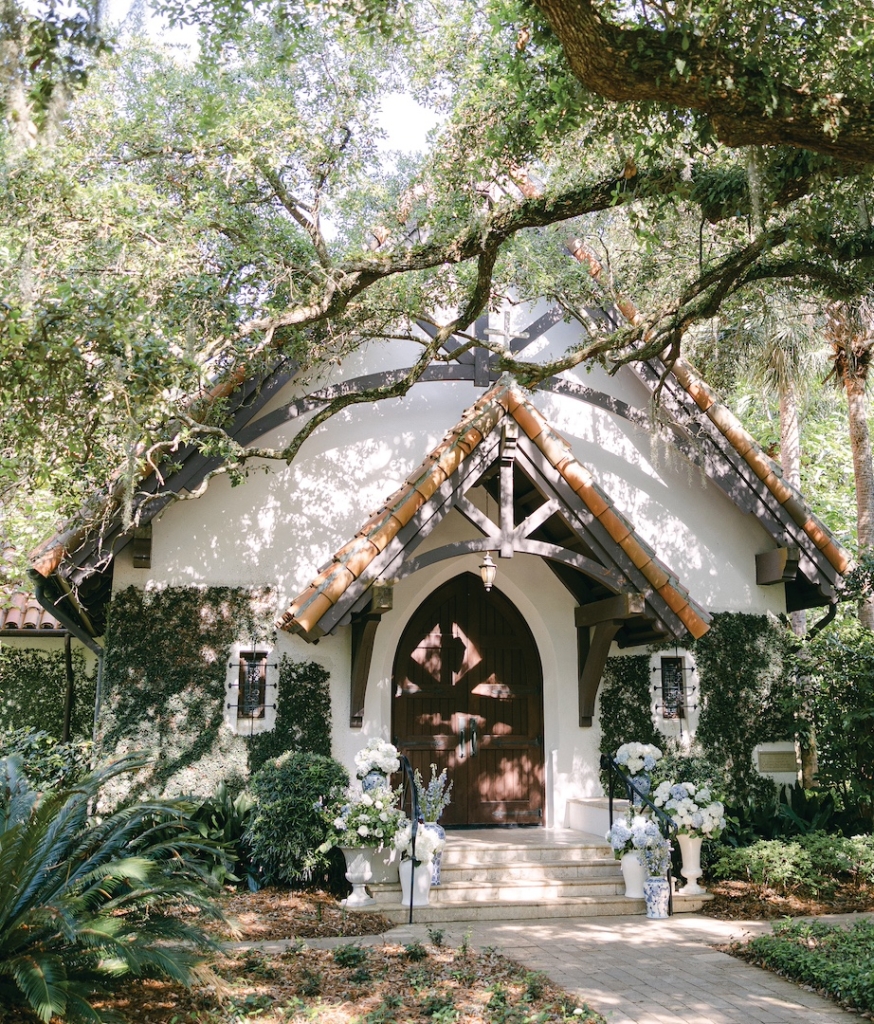
HELLO, HYDRANGEA
While traversing the grounds of Sea Island, one cannot help but notice the magnificent blooms of hydrangeas on site, from the showy Annabelle with its large white flower heads, to the blueish Endless Summer and the pink of the Penny Mac.
“The first landscape architects for Sea Island used hydrangeas in the planting plan when Sea Island was developed,” says Director of Landscape at Sea Island, Michael R. Patton. “‘Bummy’ Baumgardner was the landscape architect who created the original look and feel that we try to stay connected with even today.”
As the hydrangea can bring fond memories of family gardens and celebrations such as weddings and anniversaries, both the landscape team and the event designers receive requests for incorporating the beloved blooms.
“We most often use white or blue hydrangea in bridal bouquets,” says Sea Island Event Designer Megan Helms. “They are elegantly timeless and fill the bouquet quite nicely. We also love to see them in wreath form, adorning the doors of The Cloister Chapel (above), cheerfully welcoming wedding guests.”
CARING FOR HYDRANGEAS
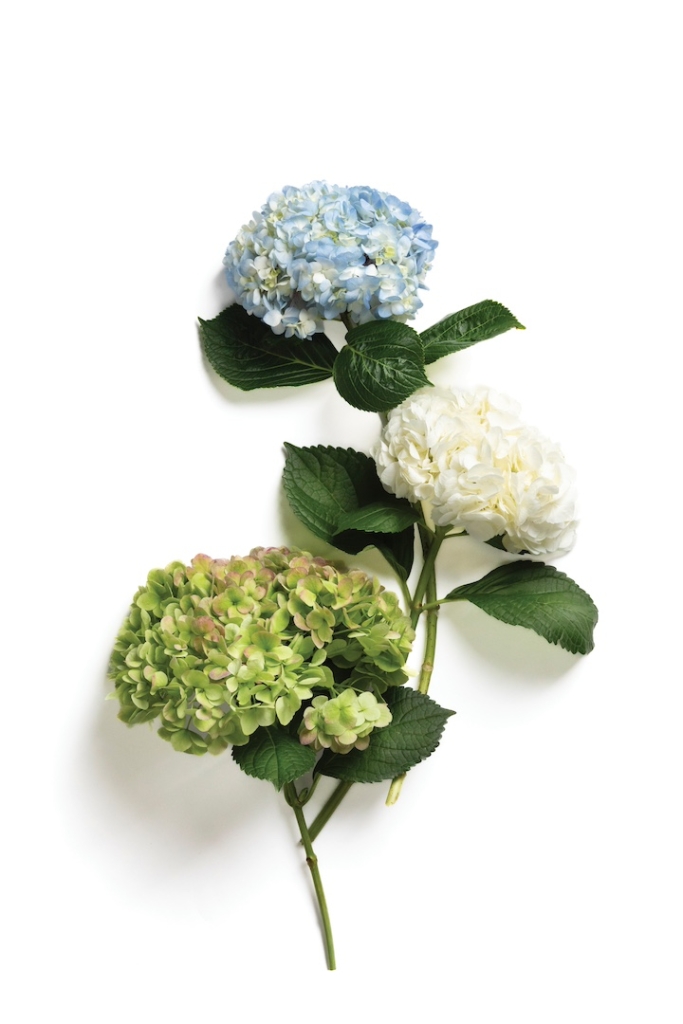 Outside of experimenting with color, caring for hydrangeas begins with knowing what specific cultivar you have. Generally speaking, avoid planting during hot summer weather–fall planting is preferred. “Plant hydrangeas in a sheltered area to avoid high winds,” says Director of Landscape at Sea Island, Michael R. Patton. “When planting, ensure they have sufficient room for expansion to avoid the need of over-pruning.”
Outside of experimenting with color, caring for hydrangeas begins with knowing what specific cultivar you have. Generally speaking, avoid planting during hot summer weather–fall planting is preferred. “Plant hydrangeas in a sheltered area to avoid high winds,” says Director of Landscape at Sea Island, Michael R. Patton. “When planting, ensure they have sufficient room for expansion to avoid the need of over-pruning.”
Other rules of (green) thumb, according to Patton: Hydrangeas benefit from deadheading, as it prolongs the bloom cycle. Leaving early fall blooms until they begin to fade on their own, will discourage growth as freeze approaches. If pruning does become necessary, it is important to identify the type of hydrangea under consideration, as incorrectly attempting this task could result in a disappointing loss of rebloom.
As to when the right time is for cutting hydrangeas for a vase, avoid the hottest part of the day. Instead, harvest your blooms in the morning or evening using clean, sharp shears.
ARRANGEMENTS FOR INDOORS
Bringing cut hydrangeas inside for arranging floral displays opens a myriad of possibilities. Patty Larson, founding owner of Lilacs of Sterling, located in Sterling, Massachusetts, recommends crushing an inch or so of the lower stems of the cut flowers and placing them in water before arranging so the water-loving blooms hydrate well. The stems can then be cut to length just before adding to the arrangement.
“For arrangements, hydrangeas pair well with roses, lisianthus, and delphiniums,” says Larson. For greenery accents, Larson incorporates lemon leaf, eucalyptus and often hypericum berries. “A statement hydrangea blossom, paired with snapdragons or gerbera daisies, makes for a beautiful display.”
The timelessness of an arrangement of fresh hydrangeas is a certain eye-catcher. During the 2006 grand re-opening of The Cloister at Sea Island, hydrangeas were the main floral item used on the interiors, incorporated from the Solarium to the Spanish Lounge. At that time, up to 1,800 hydrangeas were used to create this spectacular look.
While hydrangeas are definitely a showstopper, keeping them indoors can be finicky. To keep cut hydrangeas lasting their longest, change their water every two or three days. Hydrangeas also possess the rare ability of absorbing water, not just through stems, but through their foliage as well. If you see your blooms drooping, give them a full soak in fresh, cold water for about 10 minutes. You can also flip hydrangea upside down and run cold water over them from stem to tip, ensuring you soak both blossom and leaves. In the end, while having a beautiful bouquet of hydrangeas gracing your home may require a little extra care, the view is well worth it.




